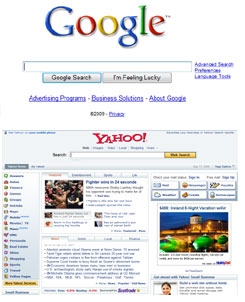Warning for Entrepreneurs: If your idea is not yet in Beta, it’s just an idea!

Ultimately, it’s big ideas that change the world (and make loads of money in the process). eBay, Google, Amazon - all of these started out as “big ideas” - and all of them have great valuations.
But it takes a lot more than a “Great Idea” to achieve great value.
If you have a great idea, in a great market, with a great presentation, and maybe even a great business plan - then what is it currently worth? The only accurate valuation method I can think of is that ideas are worth “a dime a dozen” - therefore your (unlaunched) idea is currently worth just under 1 cent.
And sadly many entrepreneurs spend weeks, months, or even years stuck in the “Idea” stage.
The old axiom “Measure twice, cut once” certainly is true in the game of entrepreneurship. Before spending enormous time, money, and resources building out an idea - it is worth researching the market potential and receptivity to the idea. But there’s a reason why it’s “Measure twice”, and not “Measure 500 times”.
Don’t get caught in the “Presentation” / “Great Idea” feedback cycle.
Once you’ve determined you have a good idea, you will likely put together a presentation and start getting feedback from friends, associates, and others - and the feedback will inevitably be that you have a “Great Idea!” Now that it’s a “Great Idea”, you can double your valuation to 2 cents, and then:
Build out a Beta site already!
Some of the greatest web success stories (including eBay) were up and running in Beta within days or weeks of the initial concept. Then the real magic began. What started as a “Great Idea” quickly became a proven idea, a proven model, and a proven business.
In the case of your idea, there will be 3 possible outcomes that you can get from your Beta launch. 1) the idea is the next killer app and you just need to add water, 2) the idea is “close” and needs some tweaking and iteration to get closer to “hitting a nerve” with your target audience, or 3) the idea is not good.
Now for the key take away…
It’s less important what the outcome of Beta is, then how long and how much it took to get there. If it takes twice as long as it should (or longer), and costs more than it should have (and remember that time is money if it took too long to get here) - then welcome to the land of lost opportunity.
If instead you got to Beta fast, and found out that “the idea needed tweaking”, then you have not exhausted your resources and can tweak away and get it right while the momentum is still there.
 It’s amazing how you can do something for 25 years, feel like you’ve “seen it all” - then read a book that causes an “aha moment” and gets you as excited as you were the day you started with it.
It’s amazing how you can do something for 25 years, feel like you’ve “seen it all” - then read a book that causes an “aha moment” and gets you as excited as you were the day you started with it. There is a battle between 2 basic strategies that plays out on the web time and time again with consistent and predictable results.
There is a battle between 2 basic strategies that plays out on the web time and time again with consistent and predictable results.